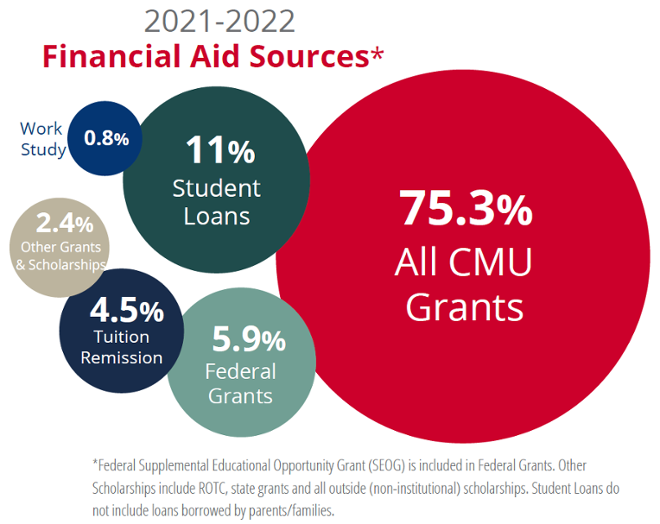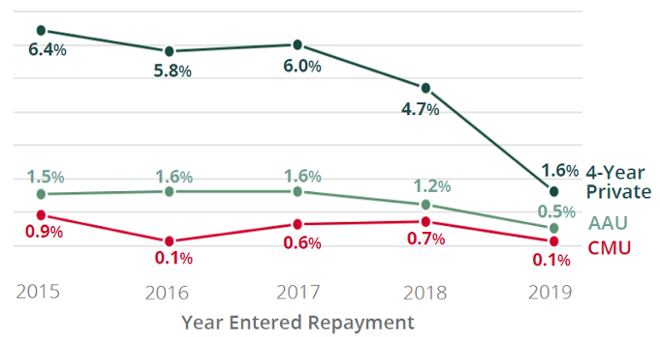Access & Affordability
Carnegie Mellon works closely with families who are eligible for financial aid to develop a comprehensive financial aid package tailored to their circumstances.
Student financial aid packages may be comprised of scholarships and grants, student employment, and loans. In addition, options like the monthly payment plan may be suggested as a way to help budget payments of educational expenses and to limit debt. Like any major investment, most families pay for education with a mix of current income, savings and borrowing. Finding the right balance among these resources can save money.
Financing a Carnegie Mellon Education
Financing a college education takes commitment, creativity and perseverance. Carnegie Mellon commits millions of dollars annually toward financial need.
In 2021-2022, financial aid packages for full-time undergraduate students consisted of a combination of federal financial assistance and Carnegie Mellon dollars. Some packages also included state grants and outside scholarships.
CMU Enrollment Bulletin
The CMU Enrollment Bulletin showcases the latest research on financial aid, national student data, higher education topics and more.
 Managing Your Money
Managing Your Money
Personal financial literacy is more than just being able to balance a checkbook, compare prices or get a job. It also includes skills like long-term vision and planning for the future, and the discipline to use those skills every day.
Our graduates have a low three-year loan default rate compared to similar institutions. CMU's default rate for fiscal year 2018 was 0.7% compared to other private, non-profit institutions, which was 4.7%.
Sources: CMU IRandA Common Data Set, 2020-21 & CMU Student Financial Services.


